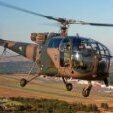Yes, interesting case. The yaw and nose up pitch caused by power, in a power on stall, can get you into trouble. Taking the aerodynamic factors or mechanics of an autorotation, the start of the spin, I think what is important here, is there is a difference between the incipient recovery and a fully developed spin recovery. In the incipient phase, the stability or aerodynamic forces acting on the tail, are dominant and if you immediately centralise the controls, (stick neutral or slightly forward of neutral), power to idle, the aircraft will recover immediately. In a fully developed spin, moments of inertia in roll, pitch and yaw, have built up, the aircraft wants to keep doing what it’s doing, according to Newton first law. Most aircraft will be considered to be in a fully developed spin after 2-3 turns. So this is when you need to pull the stick back, to prevent rudder blanking and go check power off, then full opposite rudder, ease stick forward, to install wings. I think it is not vital to “stabilise the aircraft”, especially if you don’t have much altitude to work with. Rudder blanking not so critical in my view. Just start the recovery. Spin recovery can be confusing because for a short period of time, about 3/4 of a turn, the rate of into spin roll, increases. This is because the outer wing will un-stall first, causing a short duration rapid increase in roll rate, before damping in roll suddenly stops it, as the aircraft recovers. At the end of the day, your aircraft flight manual instructions on spin recovery actions, should always be followed.








